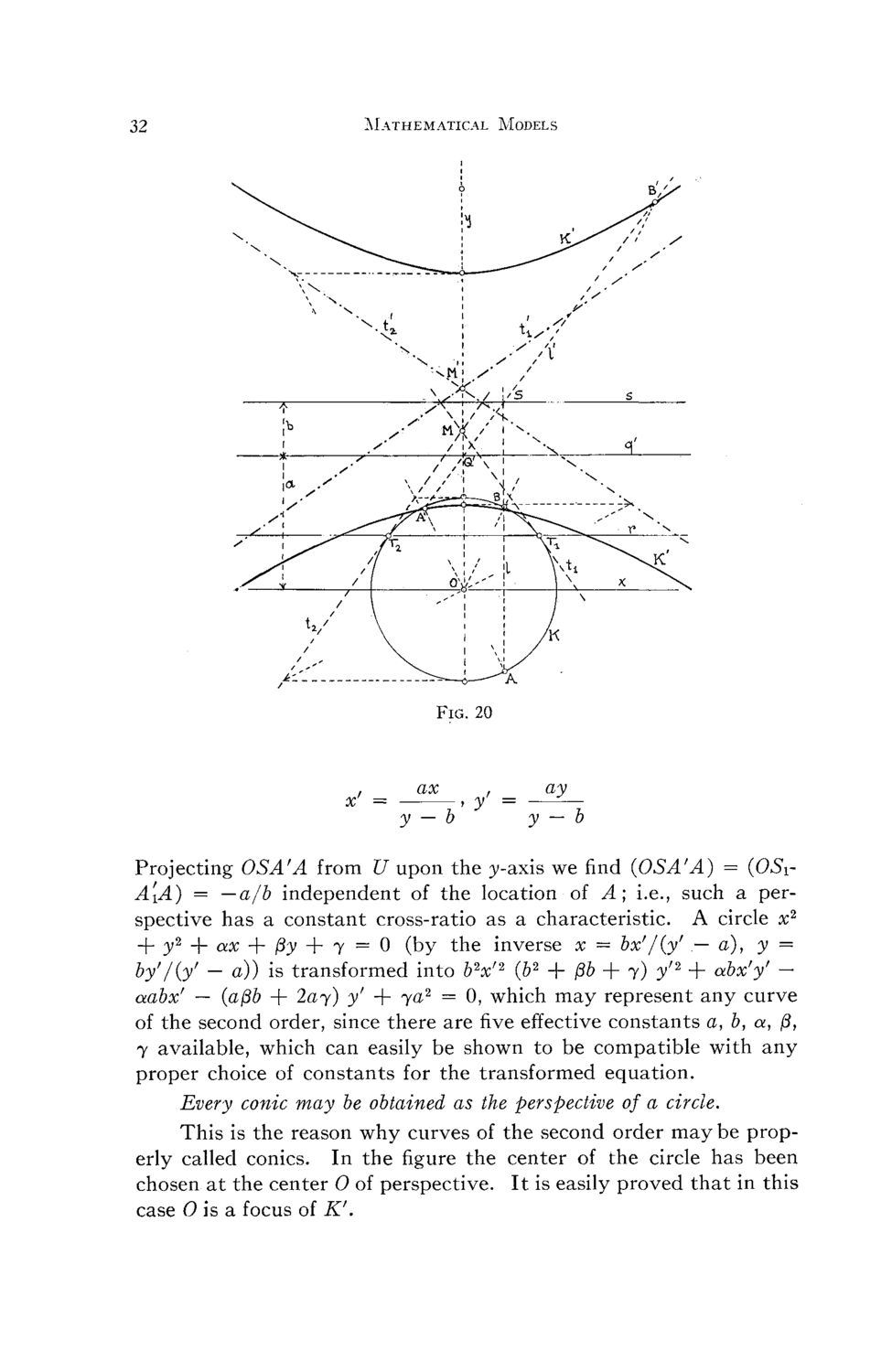| |
| |
Caption: Mathematical Models by Arnold Emch - Series 4 (1928)
This is a reduced-resolution page image for fast online browsing.

EXTRACTED TEXT FROM PAGE:
32 Mathematical Models Fig. 20 , x = ax y — b , , y = ay —^— y — b Projecting OS A'A from U upon the ;y-axis we find (OS A'A) = (OSiA[A) = —a/6 independent of the location of A ] i e , such a per.. spective has a constant cross-ratio as a characteristic. A circle x2 + y2 + ax + Py + 7 = 0 (by the inverse x = bx'/(/ — a), y = by'l(yl — a)) is transformed into b2x'2 (b2 + ( b + 7) y2 + abx'y' — 3 aafoc' — (a^fr + 2*27) yf + 7a2 = 0, which m a y represent any curve of the second order, since there arefiveeffective constants a, b, a, /3, 7 available, which can easily be shown to be compatible with any proper choice of constants for the transformed equation. Every conic may be obtained as the perspective of a circle. This is the reason w h y curves of the second order m a y be properly called conies. In thefigurethe center of the circle has been chosen at the center 0 of perspective. It is easily proved that in this case 0 is a focus of K'.
| |